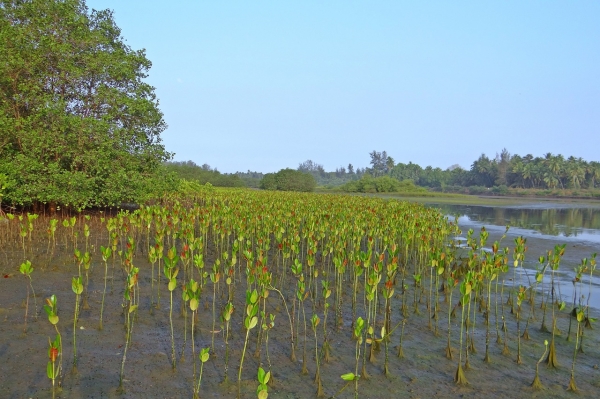Common “hard” coastal defenses, like concrete sea walls, might struggle to keep up with increasing climate risks.
Common “hard” coastal defenses, like concrete sea walls, might struggle to keep up with increasing climate risks. A new study shows that combining them with nature-based solutions could, in some contexts, create defenses which are better able to adapt. Researchers reviewed 304 academic articles on the performance of coastal defenses around the world, including: natural environments; soft measures (which support or enrich nature); hard measures (such as concrete sea walls); and hybrids of the aforementioned. Soft and hybrid measures turned out to be more cost-effective than hard measures, and hybrid measures provided the highest hazard reduction overall in low-risk areas. Although their comparative performance during extreme events that pose a high risk is not clear due to lack of data, these results still support the careful inclusion of nature-based solutions to help protect, support and enrich coastal communities.
Japan’s dramatic natural coastline, with iconic views of Mount Fuji, wind-blown pines and rocky beaches, has been captured and admired in paintings and prints for hundreds of years. But take a walk by the ocean nowadays and it can be hard to find a stretch that retains its pristine natural seascape. By the early 1990s, a government survey found that around 40% of the coast had been altered with concrete sea walls, filled harbors, stacks of tetrapods and more, adding swaths of gray to the blue-green landscape. Sprawling coastal cities and towns have grown to house most of the population, so protecting homes and businesses from the dangers of tsunamis, typhoon swells and sea-level rise has become an ever-increasing challenge.
“Sea walls, dikes, dams and breakwaters, the so-called traditional hard measures, despite being the most popular coastal defenses globally and with proven track records, are facing challenges to keep pace with increasing climate risks,” explained Lam Thi Mai Huynh, a doctoral student from the graduate program in sustainability science at the University of Tokyo and lead author of a new study on coastal defenses. “These hard structures are expensive to build and require continuous upgrades and repairs as sea level rises and climatic hazards become stronger. Although they are good at mitigating certain coastal disaster risks, they can also cause significant disruption to coastal communities and have adverse environmental effects. Furthermore, they often significantly alter the seascape and sometimes alienate local communities from nature and the very environment we seek to protect.”
Read more at University of Tokyo
Photo Credit: sarangib via Pixabay




